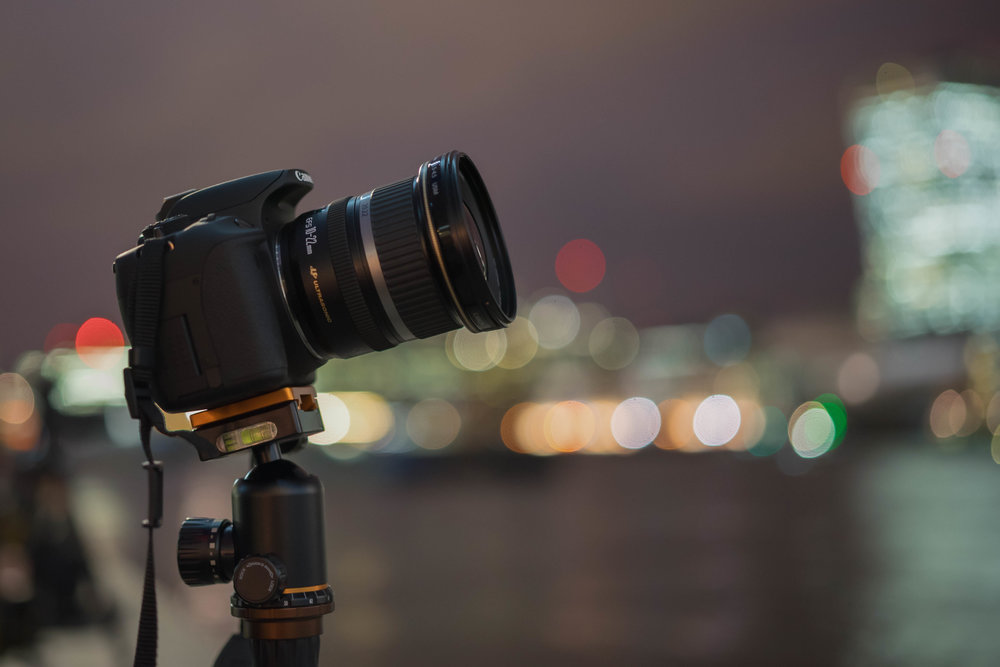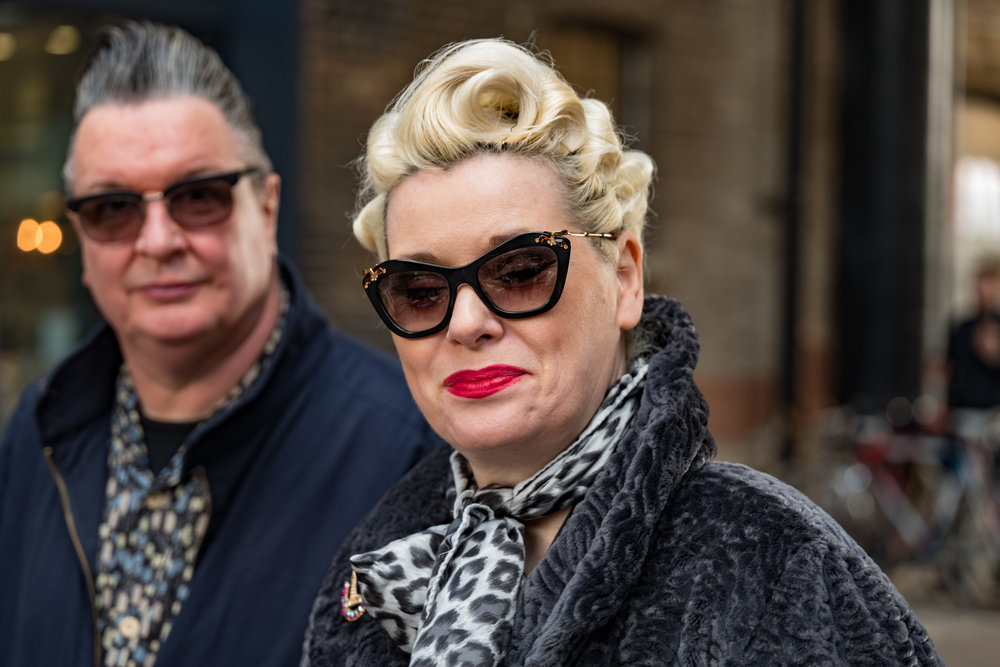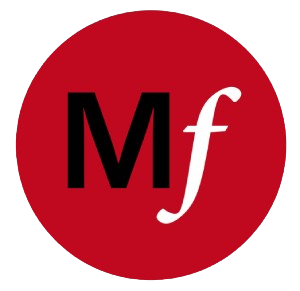
Which mirrorless interchangeable-lens camera system to opt for? The choice is wide, both in terms of individual manufacturers and in sensor size. Sensor size has to be the first criterion since it has an important influence on ultimate picture quality and governs the size of the equipment. In general, the bigger the sensor, the bigger the camera and its system lenses.
The micro four-thirds system has been gaining attention and popularity in the past year, thanks largely to landmark cameras such as the Olympus PEN-F and the new superfast and very capable OM-D EM-1 Mark II. You could be forgiven for thinking that m4/3 is about to take over the world. But there is always the lurking suspicion among m4/3 owners that a bigger sensor might be preferable.

I put my toe in the water last year, choosing m4/3 as a lightweight travel system to supplement my heavier full-frame Leicas. I’ve done a lot of work with my Panasonic GX8 and PEN-F over the months. I like these cameras, but I do miss my full-frame equipment for the higher dynamic range, superior low-light performance and narrow depth of field. What I do not miss so much is the added bulk that comes with the larger sensor.
Piling on the pounds
In the light of my experience with m4/3 my main concern is that the equipment is no longer as small and light as it once was. Improvements in sensor performance and in lens technology have piled on the pounds. The latest high-performance lenses such as the Olympus Pro series (typified by the new 25mm f/1.2) and the Panasonic Leica DG glass — including the 42.5mm f/1.2 Nocticron and the 12mm f/1.4 Summilux — are larger and heavier than you imagine.

Nor is m4/3 as cheap as it used to be. All three lenses mentioned above cost more than £1,000, serious money for a mini-system. Indeed, a good m4/3 set up costs as much as an equivalent bag of goodies from, say, Fujifilm with the X series. Admittedly, moving to full frame ups the cost considerably. There are only two mirrorless contenders, the Sony A7 and Leica SL. And, since the Leica is so expensive, the Sony is really the only choice for the budget conscious.
The choice of system is becoming harder. London professional photographer Nicholas Goodden ran a piece on PetaPixel last week explaining his reasons for giving up on micro four-thirds and moving over to a more expensive full-frame system.

“I had great hopes for the Micro Four Thirds format, I really did. So much so that initially I sold my Canon DSLR and “downgraded” to MFT. That was pre-OMD. I say “downgraded” as indeed at the time mirrorless cameras were not quite ready. Yet I could see the potential, or the marketing made me see it anyway.
“Then came the OMD system with the E-M5, and that really upped the game. It was then followed by the E-M10, E-M1 and the rest. Last year I shot some photos for Olympus’ print brochure of the E-M10 MKII, I was in Prague for the release of the E-M5 MkII and my last Olympus camera was the Pen-F, which I just sold this week.”

Selling out
Nico has sold up and moved over entirely to the Sony A7RII. He’s even given up his cherished Olympus Ambassador status. Despite this, he agrees that m4/3 does have a place in street photography, just not for his professional work.
My take on this is that for his professional photography work Nico has probably made the right decision. Micro four-thirds would never have been my first choice in his circumstances. The A7, on the other hand, is a lightweight full-frame camera (especially when compared with the Leica SL) and now has a good range of complementary lenses. Initially, when the camera was introduced, the lens range was its Achilles’ heel. But surprisingly, while m4/3 cameras such as the OM-D and GX8 have grown in size, Sony has shrunk the full-frame norm. There really isn’t that much in it when it comes to carrying the stuff around.
Having made his decision, Nico sees trouble ahead for the small format:
“I actually predict Olympus will possibly pull-out of this format (they’ll deny it of course) which will eventually disappear as full frame and medium format mirrorless cameras will be reduced in size close to MFT. Size is (or was) MFT’s biggest selling point.
“I’m more confident now delivering photos to clients and when I actually compare the results it’s an improvement. The camera may not matter, it’s our vision that does, but I want a tool that at the very least doesn’t make it difficult for me and is faithful in reproducing what I see.”

For my part, I still admire the PEN-F and GX8 and these latest professional primes are superb. It’s still a relatively light system but, as Nico says, the gap is narrowing. M4/3 has made great strides forward in terms of improved dynamic range and low-light performance but, in the end, there is no substitute for the full-frame sensors in cameras such as the Sony A7.
That said, I am still not wholly committed to m4/3 and reserve my judgment. Despite having all the m4/3 gear to play with I still find myself picking up a Leica M most times. I’m spoiled, too, in having the Leica SL with the 24-90mm. While it can knock spots off any m4/3 camera system, its big disadvantage is weight, especially when compared with the small Sony. But it produces the best results every time.
Despite this, you have to consider what you are going to do with your photographs. I’m the first to admit that most of my photography is geared towards feeding this blog. At the picture sizes seen on Macfilos and other similar weblogs, there is little discernible difference between the smaller and larger sensor. Full-frame comes into its own for professional work or if you are planning to make large prints. If not, m4/3 could offer a compelling compromise between results, weight and cost.
So what system would I recommend? Micro four-thirds still offers a great deal and is a good system for street photography. A PEN-F, with a small prime small lens such as the Leica DG 15mm f/1.7 Summilux or the Olympus 17mm f/1.8, is unobtrusive and offers a wider depth of field at any given aperture than a larger-sensor system. If you’re into sports photography, a fast DSLR lookalike such as the OM-D E-M1 II gives slick autofocus and, coupled with one of the relatively compact long zooms, excellent performance without breaking your back. But, as my colleague Bill Palmer will point out, the Fuji X series is capable of giving better results from its APS-C sensor and is now comparable both on price and weight with a pro m4/3 outfit. Indeed, there is a good case for arguing that the Fuji X series is the superior overall compromise for its relatively small size and near-to-full-frame performance.
The allure of full-frame is always there and is now more approachable financially following the reduction in sensor costs. Nevertheless, the latest A7rII body will set you back £2,900, a good £1,000 more than its Olympus m4/3 or Fuji APS-C equivalents. Yet, you can still pick up the original A7 Mark I body for £800 as a good bargain-basement entry into full-frame.
Above all, though, you need to look at full system costs, including a set of lenses to suit your photography style. Do some brand-by-brand comparisons and tot up the overall total before making your decision.
_________________
- For a full appraisal read Nicholas Goodden’s article at PetaPixel.
- And for the opposing view Why the Sony A7 was a big mistake
- Olympus OM-D E-M1 versus Fujifilm X-T2
- Subscribe to Macfilos for free updates on articles as they are published. Read more here
- Want to make a comment on this article but having problems? Please read this

"The allure of full-frame is always there…"
That’s an arbitrary statement.
Why not the allure of large-format? Or 8" by 10"?
If you can’t get the resolution you want with Micro Four Thirds then try a medium-format or large-format camera, not a "full-frame" one.
You are absolutely right. But while MF and even larger formats have their place and their allure, most ordinary mortals don’t want the size and the cost that comes with them. For most, undoubtedly, FF has become the ceiling. For better or for worse.
Interesting opinion-filled work. Appreciated the perspective but as both an engineer and professional photographer find the spattering of physics type inserts to be suspect. Shallow depth of field universally accepted, tack sharpness goes to MFT. Low light hands down full frame. But for most of us who are we balance portability, shots that don’t don’t require night vision goggles, with plenty of choices of glass. I am one that did successfully move from full-frame small body and large lenses (Sony) to the GH4 and haven’t looked back. I have shot commercial work in NYC and my work has appeared in Vanity, Vogue and Cosmo and the results have been amazing. It’s about the glass, light and composition. This story simply rants on about the same old issue. Bigger sensors are better and if you don’t use one you are compromising. Just not true. If we want to solve for this then shoot medium format. I would argue (with the same physics logic that if your shooting full–frame your shooting on a cropped sensor.
Last week in a workshop someone said, (profession deleted). "Why is it that photographers spend all of their time ranting about their equipment rather than providing helpful tips on how to make good photos. Every time I ask about lighting I’m asked what kind of camera do I shoot with. When I tell them its a Rebel I’m told I need to get a new camera? It was a rhetorical question obviously. Can we focus on photography instead of the size of the camera I shoot with?" Good question and I see it often.
Good articles on MFT testing abound. The set a baseline, report results and keep bias to a minimum. This is an opinion. Well written of at that but it has no basis of fact whatsoever.
Dear Douglas,
Many thanks for your very constructive comments. I take your views on board and I hope that any future readers of this particular article will take a look and appreciate what you say.
I am the first to admit that I am no expert, and certainly not an engineer. I am a writer and that’s what gives me most pleasure. Along the way I’m a keen photographer and I do enjoy talking about photography — with or without opinion. We do have several other contributors with differing opinions, including Bill Palmer whose passion is Fuji. He is focused on that marque (after a long association with Leica) and he has a lot of faithful followers. Readers do like a bit of opinion.
My particular interest is Leica, therefore full-frame in the main. I also have an extensive m4/3 set up so I am by no means blinkered or unaware of the respective merits of both systems.
The question of photographs versus gear is one of the biggest conundrums. I hear what you say on the results surpassing the gear but there is undoubtedly keen interest in camera reviews. A review always brings more readers than a photo-based article in my view. Again, it is a matter of opinion and personal choice. I enjoy reading about cameras and to avoid such discussions is tantamount to suggesting that, say, a car magazine should write exclusively about scenic drives rather than comparing one car to another. There is more interest in the latter, but this doesn’t mean we shouldn’t have a balance. Some websites concentrate on one aspect, some on the other; both have their place.
Still, thanks for your views. I’m not precious about what I write and I am glad to see alternate views expressed. If you would like to write an article on your experiences and provide some illustrations I would be more than happy to publish. Take me to task in the article and I am sure Macfilos readers will appreciate your views.
Mike
As usual so much to digest and always an education I read Nico article and it is hard to argue with his experience because he makes a living with his tools. I sent you a separate email on Sony sales going on now in US and Sony just made a lot easier to move to full frame.
Thanks for all this Mike – it’s really interesting! As you know I migrated from Nikon after many years via the A7R to the SL and despite the weight (and the horrendous cost!) I have no regrets at all.
Actually the SL outfit is only 500gms or so heavier than the equivalent Nikon and if you put a 24-70 on the Sony you’re front-heavy with a fiddly menu. I love the extra reach of the SL’s 24-90, it may sound irrelevant and marginal but it sure works for me…
Keep the articles coming!
https://instagram.com/johnbatten125/
John, you are absolutely right about the A7x and (next to the impenetrable menu system) it is the reason I couldn’t get on with the camera. It is too small for the lens system. You can’t ignore the laws of physics and if you make the camera smaller the lenses get longer. I agree on the SL, it is well balanced with the 24-90 (which is the only zoom I have tried) and, perhaps more to the point, the camera feels just right in the hands. I also suspect the 24-90 is made to a higher standard than even the G zoom for the Sony and, again, this adds to weight. The SL is the only alternative to the A7, of course, and I would definitely recommend it despite the cost.